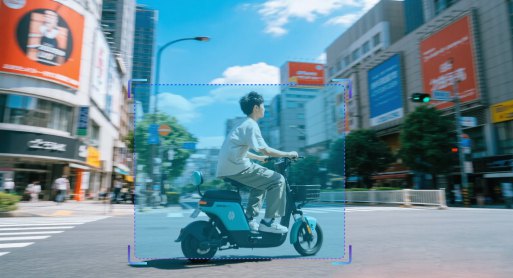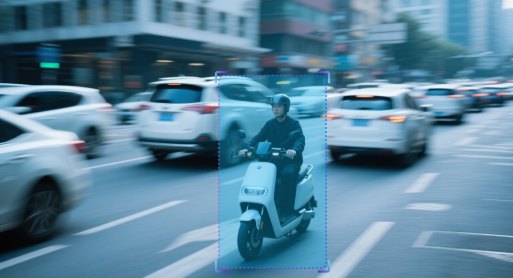
Non-Motorized Vehicle Illegal Parking Detection

Algorithm Introduction
Utilizing visual analysis technology to detect improperly parked non-motorized vehicles within designated monitoring areas and output detection bounding boxes. The system employs non-motorized vehicle recognition algorithms to process structured detection results from video streams and snapshot images captured by intelligent front-end cameras, extracting attribute information including vehicle type, body color, and electric bicycle classification.
- ● Detection scope: Non-motorized vehicles parked outside user-defined regions of interest (ROI) on road surfaces
- ● Lighting conditions: Daytime outdoor environments with normal illumination
- ● Image requirements: Optimal detection performance at 1920×1080 resolution
- ● Target size: Visually identifiable by human eye
Application Value
-

Urban Roadways
Targeting the diverse array of non-motorized vehicles on roads, the algorithm accurately extracts vehicle types, identifies body colors, and distinguishes between compliant and non-compliant electric vehicles from video streams and captured images. This empowers traffic management authorities to efficiently address illegal parking issues and ensure unimpeded traffic flow. -

Subway Stations
The algorithm utilizes visual analytics technology for comprehensive monitoring of illegally parked vehicles. The algorithm accurately identifies vehicle attributes under complex lighting conditions, ensuring smooth passenger travel and maintaining order at subway entrances. -

Parks
Utilizing park surveillance cameras, the algorithm dynamically monitors illegal parking. It can overcome lighting and obstruction challenges to extract vehicle attributes, thereby assisting the park in regulating parking and safeguarding the park environment. -

Business Districts
Utilizing the building equipment to monitor illegal parking in real time and mark detection zones, the algorithm analyzes dense vehicle patterns to provide data for property management to address illegal parking, thereby enhancing the business district environment.
FAQ
-
Algorithm AccuracyAll algorithms published on the website claim accuracies above 90 %. However, real-world performance drops can occur for the following reasons:
(1) Poor imaging quality, such as
• Strong light, backlight, nighttime, rain, snow, or fog degrading image quality
• Low resolution, motion blur, lens contamination, compression artifacts, or sensor noise
• Targets being partially or fully occluded (common in object detection, tracking, and pose estimation)
(2) The website provides two broad classes of algorithms: general-purpose and long-tail (rare scenes, uncommon object categories, or insufficient training data). Long-tail algorithms typically exhibit weaker generalization.
(3) Accuracy is not guaranteed in boundary or extreme scenarios.
-
Deployment & InferenceWe offer multiple deployment formats—Models, Applets and SDKs.
Compatibility has been verified with more than ten domestic chip vendors, including Huawei Ascend, Iluvatar, and Denglin, ensuring full support for China-made CPUs, GPUs, and NPUs to meet high-grade IT innovation requirements.
For each hardware configuration, we select and deploy a high-accuracy model whose parameter count is optimally matched to the available compute power.
-
How to Customize an AlgorithmAll algorithms showcased on the website come with ready-to-use models and corresponding application examples. If you need further optimization or customization, choose one of the following paths:
(1) Standard Customization (highest accuracy, longer lead time)
Requirements discussion → collect valid data (≥1 000 images or ≥100 video clips from your scenario) → custom algorithm development & deployment → acceptance testing
(2) Rapid Implementation (Monolith:https://monolith.sensefoundry.cn/)
Monolith provides an intuitive, web-based interface that requires no deep AI expertise. In as little as 30 minutes you can upload data, leverage smart annotation, train, and deploy a high-performance vision model end-to-end—dramatically shortening the algorithm production cycle.






